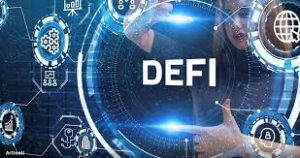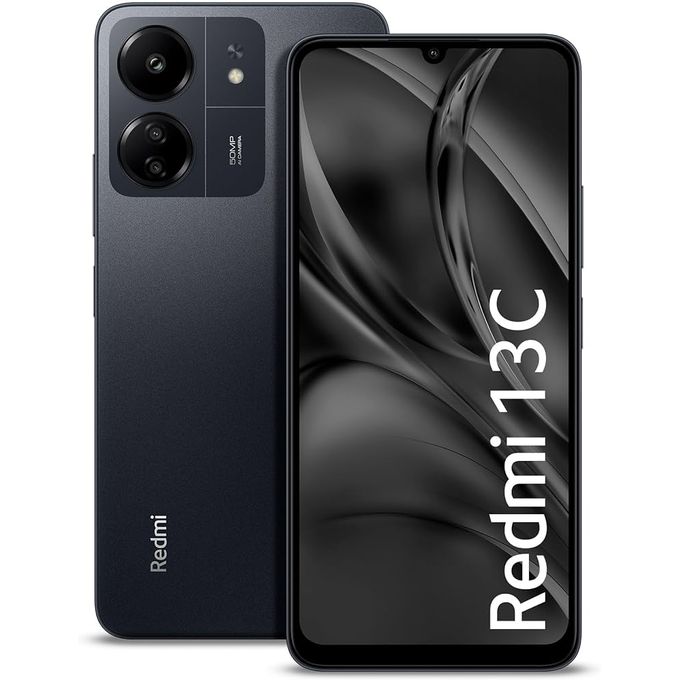Decentralized Finance and Digital Assets

The financial landscape is undergoing a seismic shift, a revolution driven by the convergence of decentralized finance (DeFi) and digital assets. These two powerful forces are dismantling traditional financial infrastructures, offering novel ways to transact, invest, and manage wealth. For those still on the periphery, understanding DeFi and digital assets is no longer a futuristic fantasy but a present-day imperative. This comprehensive guide will delve deep into the intricacies of this transformative movement, exploring its foundations, key components, potential benefits, inherent risks, and the exciting future it promises.
Laying the Groundwork: Understanding the Building Blocks
Before we delve into the dynamic interplay between DeFi and digital assets, it’s crucial to establish a clear understanding of each concept individually.
Digital Assets: More Than Just Cryptocurrencies
The term “digital asset” encompasses a broad spectrum of digitally represented value. While cryptocurrencies like Bitcoin and Ethereum are the most well-known examples, the category extends far beyond. A digital asset can be anything that exists in a digital format and has value or provides rights of ownership or use. This includes:
- Cryptocurrencies: Decentralized digital currencies utilizing cryptography for security and operating on blockchain technology. They aim to function as peer-to-peer electronic cash systems. Examples include Bitcoin (BTC), Litecoin (LTC), and Dogecoin (DOGE).
- Tokens: Digital representations of various assets or utilities that reside on an existing blockchain. Tokens can represent ownership in a company (security tokens), provide access to a service (utility tokens), or represent unique items (non-fungible tokens or NFTs).
- Stablecoins: Cryptocurrencies designed to maintain a stable value relative to a specific asset, such as the US dollar. They aim to combine the benefits of cryptocurrencies (speed, low transaction fees) with the price stability of traditional currencies. Examples include Tether (USDT) and USD Coin (USDC).
- Central Bank Digital Currencies (CBDCs): Digital forms of a country’s fiat currency, issued and regulated by the central bank. While still in their nascent stages, CBDCs represent a significant step towards the digitalization of traditional finance.
Decentralized Finance (DeFi): Reimagining Financial Services
DeFi refers to a financial system built on decentralized technologies, primarily blockchain networks like Ethereum. Unlike traditional finance (TradFi), which relies on intermediaries such as banks and brokers, DeFi aims to create open, permissionless, and transparent financial services accessible to anyone with an internet connection. Key characteristics of DeFi include:
- Decentralization: Control and decision-making are distributed across a network of participants rather than being held by a central authority.
- Transparency: Transactions and smart contract code are typically publicly auditable on the blockchain.
- Permissionless Access: Anyone can interact with DeFi protocols without needing to go through intermediaries or meet specific eligibility criteria.
- Immutability: Once transactions are recorded on the blockchain, they are extremely difficult to alter or censor.
- Composability: DeFi protocols are designed to be interoperable, allowing developers to build new applications by combining existing ones like “money legos.”
The Symbiotic Relationship: How Digital Assets Fuel DeFi
Digital assets are the lifeblood of the DeFi ecosystem. They serve as the underlying instruments for various DeFi applications and protocols. Here’s how they interact:
- Collateral: Many DeFi lending and borrowing platforms require users to deposit digital assets as collateral to take out loans. The value of the collateral determines the borrowing limit.
- Trading Pairs: Decentralized exchanges (DEXs) facilitate the trading of various digital asset pairs directly between users, eliminating the need for a central order book.
- Liquidity Provision: Users can earn rewards by providing their digital assets as liquidity to DEXs, enabling smoother trading.
- Governance: Some DeFi protocols issue governance tokens that allow holders to participate in the decision-making processes of the platform, such as voting on protocol upgrades or fee structures.
- Yield Generation: Various DeFi strategies, such as staking, yield farming, and lending, allow users to earn passive income on their digital asset holdings.
Exploring the Landscape: Key Components of the DeFi Ecosystem
The DeFi ecosystem is rapidly evolving, with new applications and protocols emerging constantly. However, some core components form the foundation:
- Decentralized Exchanges (DEXs): Platforms that enable the peer-to-peer trading of digital assets without a central intermediary. Examples include Uniswap, SushiSwap, and PancakeSwap. They often utilize automated market makers (AMMs) to determine asset prices based on supply and demand within liquidity pools.
- Lending and Borrowing Platforms: Protocols that allow users to lend out their digital assets to earn interest or borrow digital assets by providing collateral. Examples include Aave and Compound. These platforms often use algorithmic interest rate models based on supply and demand.
- Stablecoin Issuers: Entities that create and manage stablecoins, aiming to provide price stability within the volatile crypto market. Examples include Circle (USDC) and Tether (USDT).
- Yield Aggregators: Platforms that automate the process of finding and optimizing yield-generating opportunities across various DeFi protocols. Examples include Yearn.finance and Beefy Finance.
- Derivatives Platforms: Emerging protocols that aim to offer decentralized versions of traditional financial derivatives, such as futures and options.
- Insurance Protocols: Projects focused on providing decentralized insurance against various risks within the DeFi ecosystem, such as smart contract vulnerabilities. Examples include Nexus Mutual.
- Decentralized Autonomous Organizations (DAOs): Community-governed entities that manage DeFi protocols through token-based voting. DAOs aim to create more transparent and democratic governance structures.
The Allure of Decentralization: Potential Benefits of DeFi and Digital Assets
The growing popularity of DeFi and digital assets stems from the numerous potential benefits they offer compared to traditional finance:
- Financial Inclusion: DeFi can provide access to financial services for the unbanked and underbanked populations globally, as it only requires an internet connection and a digital wallet.
- Transparency and Auditability: Transactions and smart contract code are typically public and verifiable on the blockchain, fostering greater trust and accountability.
- Efficiency and Lower Fees: By eliminating intermediaries, DeFi can potentially offer faster transaction times and lower fees compared to traditional financial institutions.
- Greater Control: Users retain greater control over their assets and data, as they are not reliant on centralized custodians.
- Innovation and Composability: The open and permissionless nature of DeFi fosters rapid innovation and the creation of novel financial products and services through the composability of different protocols.
- Potential for Higher Yields: DeFi protocols can offer attractive yield opportunities through lending, staking, and yield farming, although these often come with higher risks.
- Decentralized Governance: DAOs can empower users to participate in the decision-making processes that shape the future of DeFi protocols.
Navigating the Risks: Understanding the Challenges
While the potential of DeFi and digital assets is immense, it’s crucial to acknowledge the inherent risks involved:
- Smart Contract Vulnerabilities: DeFi protocols rely on smart contracts, which are lines of code that automate financial transactions. Bugs or vulnerabilities in these contracts can lead to significant financial losses.
- Security Risks: The nascent nature of the DeFi space makes it a target for hackers and malicious actors. Users can lose funds through hacks, scams, and phishing attacks.
- Volatility: The prices of many digital assets, especially cryptocurrencies, can be highly volatile, leading to significant fluctuations in the value of DeFi investments.
- Regulatory Uncertainty: The regulatory landscape for DeFi and digital assets is still evolving, and potential future regulations could impact the growth and viability of the sector.
- Complexity and User Error: Navigating the DeFi ecosystem can be complex, requiring a strong understanding of blockchain technology and the risks involved. User errors, such as sending funds to the wrong address, can result in permanent loss of assets.
- Liquidation Risks: In lending and borrowing protocols, if the value of collateral falls below a certain threshold, it can be automatically liquidated, potentially resulting in significant losses for the borrower.
- Systemic Risks: Interconnectedness between different DeFi protocols can create systemic risks, where the failure of one protocol could have cascading effects across the entire ecosystem.
The Future is Decentralized: Trends and Predictions
The DeFi and digital asset space is dynamic and constantly evolving. Several key trends are shaping its future:
- Increased Institutional Adoption: As the market matures and regulatory clarity improves, more institutional investors are beginning to explore and participate in DeFi.
- Layer-2 Scaling Solutions: To address scalability challenges and high gas fees on networks like Ethereum, layer-2 solutions such as rollups and sidechains are gaining traction. These solutions aim to increase transaction throughput and reduce costs.
- Cross-Chain Interoperability: Efforts are underway to bridge different blockchain networks, enabling seamless transfer and interaction of digital assets and DeFi protocols across chains.
- Real-World Asset (RWA) Tokenization: The tokenization of traditional assets like real estate, commodities, and equities on blockchain platforms is gaining momentum, potentially bringing greater liquidity and accessibility to these markets.
- Decentralized Autonomous Organizations (DAOs) Maturation: DAOs are becoming more sophisticated in their governance mechanisms and are playing an increasingly important role in the development and direction of DeFi protocols.
- Integration with Traditional Finance: We may see greater integration between DeFi and TradFi, with traditional financial institutions exploring ways to leverage decentralized technologies.
- The Rise of NFTs and the Metaverse: Non-fungible tokens (NFTs) are expanding beyond digital art and collectibles, finding utility in areas like gaming, identity, and access. The growth of the metaverse, a persistent and interconnected virtual world, is also intertwined with digital assets and DeFi.
Navigating the Decentralized Frontier: A Call to Responsible Engagement
Decentralized Finance and digital assets represent a paradigm shift in how we interact with financial systems. They offer the potential for greater financial inclusion, transparency, and efficiency. However, this burgeoning landscape is not without its risks. As individuals and institutions venture into this decentralized frontier, it’s crucial to approach it with caution, conduct thorough research, and understand the inherent challenges.
Education is paramount. Staying informed about the latest developments, understanding the underlying technologies, and recognizing the potential pitfalls are essential for navigating this complex ecosystem responsibly. While the promise of a more open and accessible financial future is compelling, a cautious and informed approach is key to unlocking its true potential while mitigating the risks. The revolution has begun, and understanding its intricacies is the first step towards participating in the future of finance.











Post Comment